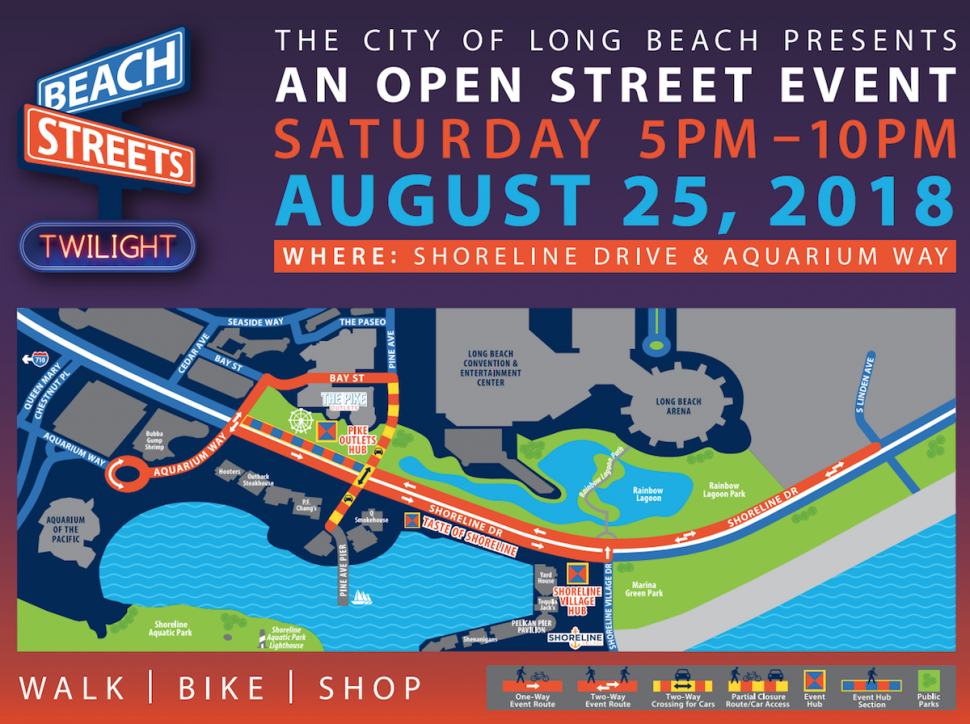Finally, Beach Streets goes twilight—that’s right: The popular ciclovía event will take over the nighttime in Long Beach as city organizers will shut down car access on Shoreline Drive from Linden Avenue on the east to Aquarium Way on the west to make room for bicyclists, pedestrians, skaters, and runners to invade the streets for their own use.
Originally proposed for May in tandem with the Amgen Bike Tour, Beach Streets Twilight will now take place on Saturday, August 25 from 5 to 10 p.m.

Backlash from local restaurant owners prompted the postponement of the ciclovía earlier this year since it would run into dinnertime—despite the fact that event was to coincide with the introduction of the 13 Amgen teams, their staffs, their families, and their fans, easily bringing in hundreds more to Beach Street’s first attempt at an evening event.
“We’ve been wanting to do an evening Beach Streets for a while,” City Manager Pat West said about the nighttime event. “The easiest and safest would be in the waterfront area, because it has the proper lighting, the space, the amenities. It would be safest there.”
And with Shoreline Drive it shall remain, showing off what Beach Streets (and its L.A.-based mother, CicLAvia) does best: putting on display the power of people using their bodies.
The group of Beach Streets events have garnered tens of thousands of visitors—Downtown’s event brought over 50,000 people and even their smaller events, like the annual takeover of the Grand Prix track, draws in a few thousand—a testament not only to its popularity but its power.
The vast majority of our public real estate is given to the individual car, a shift that took place as the automobile industry overtook mass transit, such as trains, as the main form of transportation among Americans. In this sense, we’re not used to see vast stretches of street with anything but, well, cars and traffic.
A ciclovía essentially inverts a street to be used for people’s feet and bikes and skateboards—not cars. And when that type of act is enacted, it suddenly shows off a very tangible benefit: that our urban landscape thrives most when people are exploring it at a human scale.

